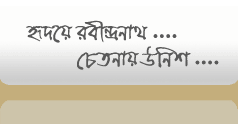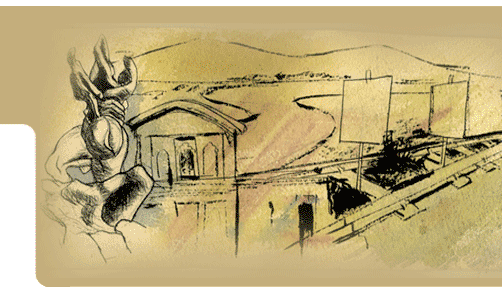





Culture
| সাম্প্রতিক সংবাদ |
D
iverse names there are for it. Some call it Ishan Bangla, some call
it the ‘third Bengal’. Whatever the name, one thing that is absolutely
clear about it all is that this region is the home of a people whose
lingua franca is Bengali. Then again, this also is a fact that the
Bengali people here are, in a historical sense, strung together
in string of diversity. Like it is in the ‘other’ Bengal, Rabindranath,
Lalon, Michael; these names exist here as well. Here also there
is kirtana and bhatiyali , and even the intoxicating melodies of
twentieth century modern Bengali music. But the Bengali culture
here exists within a surrounding grotto of multilingual cultures.
The birds do sometimes fly into our courtyard too, with nectar gathered
from those grottos. The Bengali culture here is a different thing
altogether, therefore; probably quite different from the ‘other’
Bengal we know of. Sometimes, one can hear the melodies of our neighbours
in the Bengali music that is born here. Sometimes our artists dip
their brushes in colour to portray our neighbour tribal cultures
too. Long ago it was, in the thirties decade of the last century,
when a talent spotting team from HMV came across Kunjalal Singha
in a remote area of this valley and selected him for a recording
with the company. Qazi Nazrul Islam wrote songs which were nearly
alike the melodies of Kunjalal’s Manipuri kirtana. Kunjalal’s songs
were later produced by HMV. The great Tagore had brought Manipuri
dance teachers to Santiniketan for the furbishing of a dance sub-genre
which fitted his songs. Among them there had been people from Barak
Valley – Guru Bihari Singha and Guru Senarik Rajkumar. It had been
Mukundadas Bhattacharjya who had established the local folk dance
forms of Barak Valley alongside the traditional classical canon
of dance at Lucknow and Bhatkhande. And it is through his efforts
that Barak’s indigenous dance forms are now studied as part of dance
curricula throughout India. Few know the name of Varadakanta Das
who first launched Barak’s Manipuri dance on the New Empire stage
in Kolkata. The world came to know this wonderful Indian dance form
through his efforts only. And then there are Guru Bipin Singha and
Guru Kamini Singha, and also others, through whose efforts this
Manipuri dance form has been made popular all over. And it is so
even now. With the world of drama in Barak Valley is also associated
the name of Deenabandhu Mitra who had been a resident of Silchar
in his official capacity. Just as the nationalist political culture
ushered in a new era for this valley’s urbanite society, so also
did the first Assam State Convention of the Indian Peoples’ Theatrical
Association which was held in Silchar in 1946 help accelerate the
progress of a new protestant culture here. In the post-Independence
era, amidst the communal tension prevalent in the country then,
the communist leader Achintya Bhattacharjya dramatised Samaresh
Mazumdar’s famous short story ‘Aadab’. Even before that this trend
had been there, right from when the Surma Valley Cultural Squad
visited Cachar. Under the leadership of the legendary communist
Hijom Iravat Singha, a group of Manipuri performers participated
in the historic Netrakona convention. The progressive cultural movement
and its effects still make their presence felt in the valley’s cultural
trends.
Besides all
that, Barak Valley’s film culture began its proliferation way back.
Film production, cineclubs, commercial films, short non-commercial
documentaries – even though it never achieved a distinct sphere
of success, yet those starry eyed film enthusiasts lived here as
well. Not only in the valley, from Tollygunj to Bollywood, the people
of this valley have exerted themselves.
In the eighties
decade of the previous century, when the ‘bideshi hatao’ movement
was spreading all over the state of Assam, no counter movement rose
in protest against it from the valley. When Bengali newspapers were
being banned in the Brahmaputra valley and Bengali films forbidden,
when through various means and ways the Bengali speaking populace
were being oppressed by the aggressors, Barak Valley had sounded
the bugle of harmony. When in the Brahmaputra valley, the claims
for rift and dissension had begun voicing themselves, in Silchar
people were singing Jyotiprasad’s Assamese songs at Bengali socio-cultural
conventions. Celebrities from the Brahmaputra valley have always
been lauded and felicitated in Barak Valley. Through ways more than
one, the People’s Theatrical Movement has effected its wonderfully
unique avatar in Barak Valley.
As time has
passed and technological advancements have advanced more, and more,
there have sprung up avenues for recording and music production
in the valley itself. And Barak is not backward as it is when it
comes to upgrading its use of newer and newer modes of production
and technological application. Folk music and Rabindrasangeet besides
other genres are regularly produced here. Short films in digital
format are also being produced in Barak Valley.
Even though
it is a remote region geo-politically and culturally, yet Barak
Valley’s Bengali populace have retained their affiliation to the
common greater trend of Bengali identity through their cultural
efforts. Bengali and its neighbour-cultures complement each other
in this valley of harmony.
1) Essays:~ (Bengali)
(a)Ganesh Nandi
2) Culture- a preview:~
(a)Songs
(b)Recitations
(c)Dances
(d)Paintings
(e)Films & Videos